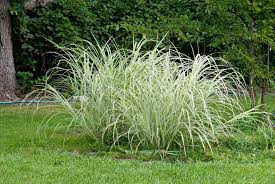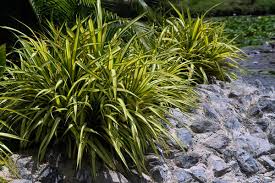Sedge grass, scientifically known as Cyperus spp., is a remarkable and adaptable plant found in wetlands across the globe. With its unique characteristics and versatile uses, sedge grass plays a vital role in maintaining the health and balance of wetland ecosystems.
These slender, grass-like plants are often mistaken for true grasses, but they belong to the Cyperaceae family. Sedge grass thrives in damp environments, including marshes, bogs, and the edges of lakes and rivers. Its adaptability to various moisture levels and soil types allows it to flourish in both shallow water and moist soils.
One of the notable features of sedge grass is its triangular stem, which sets it apart from traditional round-stemmed grasses. This structural distinction helps sedge grass remain upright in waterlogged conditions and aids in its water-absorbing capabilities. The plant’s root system further enhances its water-retention abilities, making it an effective tool for preventing soil erosion along water bodies.
Beyond its ecological significance, sedge grass offers numerous benefits to both humans and wildlife. Indigenous communities have long utilized sedge grass for its versatile applications. The stems are woven into mats, baskets, and even hats, showcasing the plant’s strength and flexibility. These traditional crafts not only demonstrate the resourcefulness of native cultures but also highlight sedge grass’s durability and longevity.
In wetland ecosystems, sedge grass acts as a natural filtration system, purifying water by trapping sediments and absorbing pollutants. Its dense growth provides refuge and nesting sites for various bird species, while also serving as a foraging ground for insects, amphibians, and small mammals. Additionally, sedge grass contributes to the overall biodiversity of wetlands, supporting a delicate balance of species.
Conservation efforts aimed at protecting wetlands play a crucial role in preserving sedge grass populations. The destruction of wetland habitats due to urbanization and industrial activities threatens not only the existence of sedge grass but also the countless species that rely on these ecosystems for survival. By raising awareness about the importance of wetlands and sedge grass, we can contribute to the safeguarding of these valuable natural resources.
In addition, sedge grass (Cyperus spp.) stands as a remarkable and adaptable plant that thrives in wetland environments. Its unique features, ecological significance, and cultural applications make it a true wetland wonder. By recognizing the vital role of sedge grass in maintaining healthy ecosystems, we can work towards preserving these valuable habitats for generations to come.
Read Also: Shih Tzu Dogs: Description and Complete Care Guide
Complete Growing and Care Guide of Sedge Grass

Sedge grass, scientifically known as Cyperus spp., is a versatile and valuable plant that can be a great addition to wetland gardens, ponds, and water features. Here’s a comprehensive guide to help you successfully grow and care for sedge grass:
1. Choosing the Right Location: Sedge grass thrives in wetland environments, so choose a location that receives ample sunlight but remains consistently moist. It can tolerate both full sun and partial shade.
2. Soil Preparation: Prepare the planting area by ensuring the soil is well-draining and rich in organic matter. Sedge grass prefers slightly acidic to neutral soil pH.
3. Planting: Plant sedge grass in the spring or early summer when the soil is warm and moist. Dig a hole slightly larger than the root ball and place the plant at the same level it was growing in its container. Backfill the hole and gently tamp down the soil.
4. Watering: Sedge grass requires regular watering, especially during the establishment period. Keep the soil consistently moist but avoid waterlogging. A soaker hose or drip irrigation system can be useful for providing consistent moisture.
5. Mulching: Apply a layer of organic mulch around the base of the plant to help retain moisture, regulate soil temperature, and suppress weed growth. Keep the mulch a few inches away from the stem to prevent rot.
6. Fertilization: Sedge grass doesn’t typically require heavy fertilization. If the growth seems slow or the foliage appears pale, you can apply a balanced, slow-release fertilizer in the spring. Avoid over-fertilizing, as this can lead to excessive growth.
7. Pruning and Maintenance: Sedge grass is relatively low-maintenance. Trim back any dead or brown foliage in the spring to encourage new growth. Divide mature clumps every few years to maintain vigor and prevent overcrowding.
8. Pest and Disease Management: Sedge grass is generally resistant to pests and diseases. However, keep an eye out for signs of aphids, slugs, or snails, and treat them promptly if they appear.
9. Overwintering: Sedge grass is hardy in many regions, but some varieties might benefit from a layer of mulch or straw around the base to protect the roots during harsh winters.
10. Wildlife Benefits: Sedge grass attracts beneficial insects, provides habitat for birds, and serves as a valuable food source for wildlife. Consider its ecological role when designing your garden.
11. Container Gardening: Sedge grass can be grown in containers placed in a water feature or in a consistently moist area. Choose a container with good drainage and use a soil mix designed for water-loving plants.
12. Local Regulations: Check with local authorities before planting sedge grass, as it might be considered invasive in some regions. Make sure you’re not introducing it into sensitive ecosystems.
By following these guidelines, you can successfully grow and care for sedge grass, enhancing the aesthetics of your garden while contributing to the health of wetland ecosystems. Remember that each species of sedge grass might have specific care requirements, so it’s always a good idea to research the particular variety you’re growing for the best results.
Read Also: Pomeranian Dogs: Description and Complete Care Guide
Benefits and Uses of Sedge Grass

Sedge grass, scientifically known as Cyperus spp., offers a range of benefits and versatile uses, making it a valuable plant in both ecological and human contexts. Here are some of the key benefits and uses of sedge grass:
1. Erosion Control: Sedge grass has an extensive root system that helps stabilize soil and prevent erosion along water bodies. Its ability to thrive in wetland environments makes it a natural choice for protecting shorelines and maintaining the integrity of banks.
2. Water Filtration: In wetland ecosystems, sedge grass acts as a natural filter, absorbing pollutants and trapping sediments from water. This contributes to improving water quality and maintaining the health of aquatic habitats.
3. Biodiversity Support: The dense growth of sedge grass provides valuable habitat for various wildlife species. It offers shelter, nesting sites, and food sources for birds, insects, amphibians, and small mammals, contributing to the overall biodiversity of wetland ecosystems.
4. Cultural and Traditional Uses: Indigenous communities have long utilized sedge grass for traditional crafts. Its strong and flexible stems are woven into mats, baskets, and other items, showcasing its cultural significance and practical applications.
5. Wetland Restoration: Sedge grass plays a vital role in wetland restoration projects. Its transplantation to degraded wetland areas can help revive and stabilize these ecosystems, promoting the return of native plant and animal species.
6. Garden Aesthetics: Sedge grass can enhance the beauty of gardens, ponds, and water features. Its graceful, arching foliage adds texture and movement to landscape designs, creating visually appealing focal points.
7. Soil Improvement: As sedge grass grows and decomposes, it contributes organic matter to the soil, improving its structure and nutrient content. This can enhance soil fertility and support the growth of other plants.
8. Medicinal Uses: Certain species of sedge grass have been used in traditional herbal medicine for their potential medicinal properties. They have been utilized to treat various ailments, including digestive issues and skin conditions.
9. Educational Purposes: Sedge grass can serve as an educational tool for teaching about wetland ecosystems, plant adaptations, and ecological interdependencies. Its presence in educational gardens and nature reserves can help raise awareness about environmental conservation.
10. Carbon Sequestration: Wetland environments, where sedge grass often thrives, play a role in carbon sequestration. They can help capture and store carbon dioxide, contributing to efforts to mitigate climate change.
11. Livestock Forage: In some regions, sedge grass can be used as forage for livestock, providing a source of nutrition for animals in wetland areas.
12. Art and Craft Material: Apart from its traditional uses, sedge grass can also be employed as a material for artistic and craft projects, adding a unique and natural element to creative endeavors.
13. Wildlife Habitat Creation: Planting sedge grass in garden ponds or wetland areas can create a habitat for aquatic and semi-aquatic creatures, such as frogs, turtles, and dragonflies.
From its ecological contributions to its cultural significance and practical applications, sedge grass demonstrates its value as a versatile and multi-faceted plant. Whether protecting shorelines, enhancing landscapes, or supporting biodiversity, sedge grass continues to play a meaningful role in various aspects of human and natural ecosystems.
Read Also: Choosing the Right Infant Bed
